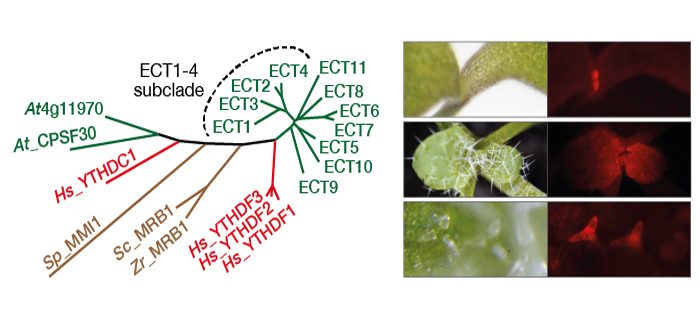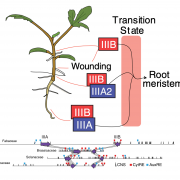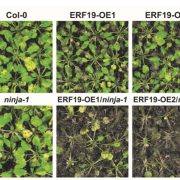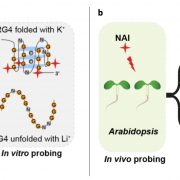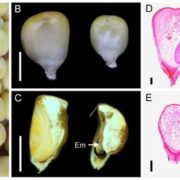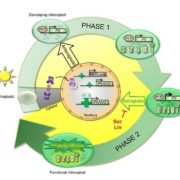Digging into the Big Family of Plant m6A Readers
Arribas-Hernández et al. find that the N6-methyladenosine RNA binding proteins ECT2, ECT3, and ECT4 are required for the correct timing of leaf formation and correct leaf and trichome morphogenesis. Plant Cell (2018). https://doi.org/10.1105/tpc.17.00833.
By Laura Arribas-Hernández
Background: Recent research has uncovered critical regulatory functions, in plants and animals, of specific chemical modifications of messenger RNA (mRNA). Methylation of adenosine at the nitrogen-6 position (m6A) is the most abundant internal modification. The m6A modification is required for stem cell differentiation, and the enzyme responsible for m6A deposition (the m6A “writer”) is essential during embryogenesis in plants and animals. Proteins that bind specifically to the modified adenosine and act as effectors of this pathway are called m6A “readers”. In animals and yeast, some members of a family of proteins that contain a so-called YTH domain are m6A readers. Plants have more YTH-domain proteins than other eukaryotes, but their possible functions as m6A readers have been unclear.
Question: Using the flowering plant Arabidopsis thaliana as a model organism, we aimed to discover if plant YTH-domain proteins are m6A readers, and to characterize their functions in plant development. 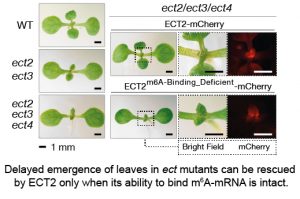
Findings: We found that certain double and triple mutant combinations of three genes in Arabidopsis encoding the YTH-domain proteins ECT2, ECT3 and ECT4 result in developmental defects. In particular, these mutants have delayed formation of leaves and abnormal leaf shape. Accordingly, the three proteins are expressed at the sites of leaf formation and in the division area of developing leaves. The defects in the mutants can be rescued by introduction of wild type copies of the genes. Importantly, the ECT proteins lose biological activity if amino acids necessary for binding to m6A are mutated. In addition, ect2/3 single and double mutants have abnormally shaped trichomes (plant hairs), and the proteins are also expressed in these organs at early stages. All defects closely resemble those of weak mutants in the m6A writer complex.
Next steps: The next step is to identify the m6A-mRNA targets of ECT2/3/4 that are responsible for the phenotypes described in this paper. That would lead to two important achievements: first, the identification of fundamental processes in plant development regulated via m6A-YTH, and second, the provision of a valuable tool to study how YTH-domain proteins regulate their targets, a process that is not yet well understood in any organism.
Laura Arribas-Hernández, Simon Bressendorff, Mathias Henning Hansen, Christian Poulsen, Susanne Erdmann, Peter Brodersen (2018). An m6A-YTH Module Controls Developmental Timing and Morphogenesis in Arabidopsis. Plant Cell May 2018, 30: 952-967; DOI: https://doi.org/10.1105/tpc.17.00833.
KEYWORDS: m6A, YTH, ECT2/3/4, plant, development


